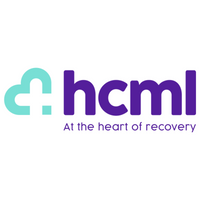4 steps to using benefits data to promote a healthier workforce
It is widely accepted that investing in employee wellbeing can lead to improved employee engagement. For wellbeing initiatives to be effective and create change, individuals need to take responsibility for their own health and wellbeing.
As an employer, there isn’t a ‘one-size-fits-all’ initiative for employees. Additionally, you can’t force people to change their behaviour. But you are in a position to provide an array of initiatives, provide support, education and create a culture to encourage healthy lifestyle behaviour that creates change.
First, you need to know your employees. Understand which types of wellbeing data are useful and what you need to build a true picture of the health of your workforce. Then you can tailor interventions to your workforce to drive behaviour change.
1. Get personal
Measuring the effectiveness of ‘wellbeing’ services can be tricky. While they may be seen as ‘nice to have’ services rather than core to health risk management, the impact of addressing specific wellbeing factors should not be underestimated.
We found that 85% of ill health has an underlying cause or contributory risk factor that is non-clinical. These are what we call personal risk factors, such as sleep, physical activity or nutrition.
Capturing these key metrics can help identify where support is needed but also enables a tailored and personalised approach to help employees understand their own unique risk factors and what they can do to take control of their own health. People are more likely to engage when the support is tailored to them.
2. Integrate and scrunitise data from across all providers
Analysing data in silos can lead to assumptions about the health of your workforce and the extent to which they are engaged in the health and wellbeing services you provide.
While you may think a high uptake in physiotherapy services means you are providing the right support for your workforce, it might not be telling you why so many employees are struggling with these types of health conditions, or how many people are repeated users of the service for the same condition.
There may be underlying factors or potential risks that could be contributing to these musculoskeletal (MSK) complaints that you would not be able to identify from clinical assessment and treatment alone.
Our analysis of 35,000 MSK assessment found:
- 69% were overweight or obese
- 92% did not meet the required activity guidelines
- 43% regularly had less than 6 hours of sleep a night
- 58% presented limiting fears and attitudes to their condition
By analysing the data and understanding the link between the initial health concern and personal risk factors, we encouraged more than one-third of employees to use self-help methods and make changes themselves to improve their health.
The rest were supported by our matched care model to recommend the most appropriate treatment for each person. By taking this approach, more than half return to work earlier when compared with clinical averages.
With a better understanding of their conditions, employees were able to take control of their recovery by changing their behaviour and potentially mitigate future concerns.
3. Identify trends and patterns to inform strategy
Data provides the unique insights you need to inform the strategic direction your workforce health and wellbeing.
While typical health plans and benefits tend to provide standard solutions to ill health, identifying trends and patterns specific to your workforce can help you develop unique initiatives and specially tailored benefits that really tackle health issues among your employees.
Having one single system to capture all health and wellbeing data makes identifying patterns and trends a lot easier. This enables you to put in place relevant support and personalised measures that your employees will be more likely to engage with.
4. Collect data on the healthy, too
Most health and wellbeing data is focused on those who have become unwell, ie sickness absence. From this data we learn how we can fix the problem after it has already happened.
Workplace data should also look at understanding the whole population, not just those who have used a service when they have become unwell. Health and wellbeing data should capture the entire workforce and help you understand what measures organisations can be put into place for all employees to mitigate future ill-health risk, but also what measures a business and individuals can access he healthy in the first place and stay that way.
Supplied by REBA Associate Member, HCML
HCML is a health and wellbeing provider, offering integrated and personalised healthcare solutions.








